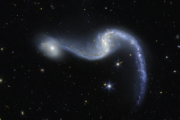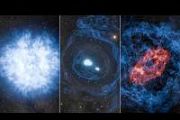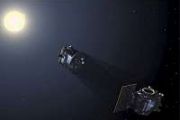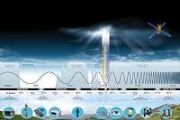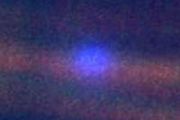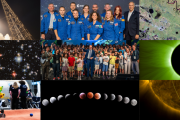
Copernical Team
Space tested menstrual cup backs astronaut health on long missions
 Astrobiologist Ligia Coelho and collaborators have shown that a standard silicone menstrual cup can tolerate spaceflight conditions, opening another option for managing menstruation on long-duration missions.
Coelho, a 51 Pegasi b Postdoctoral Fellow in astronomy in Cornell Universitys College of Arts and Sciences and a fellow at the Carl Sagan Institute, leads AstroCup, a volunteer group
Astrobiologist Ligia Coelho and collaborators have shown that a standard silicone menstrual cup can tolerate spaceflight conditions, opening another option for managing menstruation on long-duration missions.
Coelho, a 51 Pegasi b Postdoctoral Fellow in astronomy in Cornell Universitys College of Arts and Sciences and a fellow at the Carl Sagan Institute, leads AstroCup, a volunteer group The World's Best Golf Resorts: Where Luxury Meets the Fairway
 For golf enthusiasts, a memorable round isn't just about the score - it's about the setting, the experience, and the atmosphere. The world's best golf resorts combine championship courses with luxury accommodations, breathtaking landscapes, and first-class amenities. From the windswept coastlines of Scotland to the tropical beauty of Hawaii, these top-tier destinations offer more than just a game they deliver an unforgettable escape and some even let players enjoy
For golf enthusiasts, a memorable round isn't just about the score - it's about the setting, the experience, and the atmosphere. The world's best golf resorts combine championship courses with luxury accommodations, breathtaking landscapes, and first-class amenities. From the windswept coastlines of Scotland to the tropical beauty of Hawaii, these top-tier destinations offer more than just a game they deliver an unforgettable escape and some even let players enjoy TRAPPIST 1 flares mapped to probe planetary habitability
 TRAPPIST-1, a small star about 40 light-years from Earth in the constellation Aquarius, produces flares roughly six times per day, and this activity complicates efforts to evaluate whether its planets could be habitable.
A team led by the University of Colorado Boulder used NASAs James Webb Space Telescope together with detailed computer simulations to study how these flares arise and how
TRAPPIST-1, a small star about 40 light-years from Earth in the constellation Aquarius, produces flares roughly six times per day, and this activity complicates efforts to evaluate whether its planets could be habitable.
A team led by the University of Colorado Boulder used NASAs James Webb Space Telescope together with detailed computer simulations to study how these flares arise and how Supernova mixing traced as source of key life elements
 Kyoto University and Meiji University researchers have used the XRISM X-ray satellite to quantify chlorine and potassium in the Cassiopeia A supernova remnant, addressing a longstanding gap in how the universe produced these life-related elements. The work examines why current stellar models yield only about one-tenth of the chlorine and potassium inferred from observations across the cosmos.
Kyoto University and Meiji University researchers have used the XRISM X-ray satellite to quantify chlorine and potassium in the Cassiopeia A supernova remnant, addressing a longstanding gap in how the universe produced these life-related elements. The work examines why current stellar models yield only about one-tenth of the chlorine and potassium inferred from observations across the cosmos. Methane hint on TRAPPIST 1e seen as likely stellar noise not proof of an atmosphere
 Two recent papers based on James Webb Space Telescope observations describe initial attempts to probe the atmosphere of TRAPPIST-1e, an Earth-sized planet orbiting in the habitable zone of the nearby red dwarf star TRAPPIST-1. In a follow-up analysis, University of Arizona planetary scientist Sukrit Ranjan argues that the current evidence is not yet sufficient to confirm that TRAPPIST-1e has an
Two recent papers based on James Webb Space Telescope observations describe initial attempts to probe the atmosphere of TRAPPIST-1e, an Earth-sized planet orbiting in the habitable zone of the nearby red dwarf star TRAPPIST-1. In a follow-up analysis, University of Arizona planetary scientist Sukrit Ranjan argues that the current evidence is not yet sufficient to confirm that TRAPPIST-1e has an Astrobotic lunar surface sensor to track cislunar traffic and security
Martian sound study models acoustic signals in Jezero crater
 Acoustic signals have been important markers during NASA's Mars missions. Measurements of sound can provide information both about Mars itself - such as turbulence in its atmosphere, changes in its temperature, and its surface conditions - and about the movement of the Mars rovers.
Using these sound measurements to the best extent possible requires an accurate understanding of how sound pr
Acoustic signals have been important markers during NASA's Mars missions. Measurements of sound can provide information both about Mars itself - such as turbulence in its atmosphere, changes in its temperature, and its surface conditions - and about the movement of the Mars rovers.
Using these sound measurements to the best extent possible requires an accurate understanding of how sound pr Cedars-Sinai and Exobiosphere Partner to Launch Biomedical Research Aboard the Vast Haven-1 Space Station
 Cedars-Sinai is partnering with Exobiosphere, a company that has developed scientific hardware to automate biomedical research in space and on Earth. Using this hardware, Cedars-Sinai investigators will send experiments to Haven-1, which is set to become the world's first commercial space station, developed by Long Beach-based aerospace company Vast.
The investigators want to study how the
Cedars-Sinai is partnering with Exobiosphere, a company that has developed scientific hardware to automate biomedical research in space and on Earth. Using this hardware, Cedars-Sinai investigators will send experiments to Haven-1, which is set to become the world's first commercial space station, developed by Long Beach-based aerospace company Vast.
The investigators want to study how the AAC Clyde Space secures ESA funding to develop Sirius EDGE on board computer
 AAC Clyde Space has received SEK 4.7 million from the ESA Phi-Lab Sweden programme to develop the foundation for its next-generation Sirius EDGE on-board computer platform for small satellites and unmanned aerial vehicles. The work will be carried out at AAC Clyde Space in Uppsala together with subsidiary Spacemetric in Sollentuna and the KTH Royal Institute of Technology in Stockholm. The proje
AAC Clyde Space has received SEK 4.7 million from the ESA Phi-Lab Sweden programme to develop the foundation for its next-generation Sirius EDGE on-board computer platform for small satellites and unmanned aerial vehicles. The work will be carried out at AAC Clyde Space in Uppsala together with subsidiary Spacemetric in Sollentuna and the KTH Royal Institute of Technology in Stockholm. The proje OroraTech expands GENA satellite platform with orbital testbed for scientific payloads
 OroraTech has launched GENA-OT, the first mission built on its GEneric flexible NAnosatellite platform, on SpaceX's Transporter-15 rideshare flight from Vandenberg Space Force Base. The 16U CubeSat was developed under the European Space Agency's General Support Technology Programme with funding from the German Space Agency at DLR to provide a standardized satellite bus for scientific and technol
OroraTech has launched GENA-OT, the first mission built on its GEneric flexible NAnosatellite platform, on SpaceX's Transporter-15 rideshare flight from Vandenberg Space Force Base. The 16U CubeSat was developed under the European Space Agency's General Support Technology Programme with funding from the German Space Agency at DLR to provide a standardized satellite bus for scientific and technol 












